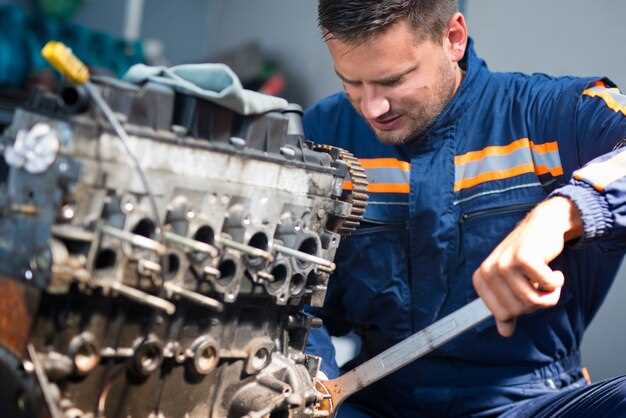
Towing a vehicle or trailer requires careful preparation and attention to detail to ensure safety on the road. A well-structured towing equipment checklist can help avoid potential hazards and guarantee a smooth transport experience. This checklist serves as a guide not only for seasoned professionals but also for individuals who may be towing for the first time.
Understanding the components of your towing setup is essential. From hitches to safety chains, each element plays a critical role in maintaining stability and control during transit. In this article, we will outline the key equipment needed for safe towing, emphasizing the importance of regular inspections and compliance with legal requirements.
By following a comprehensive towing equipment checklist, you can mitigate risks, enhance safety, and ensure that your cargo reaches its destination without incident. Whether for work or leisure, being equipped with the right tools and knowledge is vital for any towing scenario.
Inspecting Your Tow Vehicle and Trailer

Before hitting the road with your trailer, a thorough inspection of both your tow vehicle and the trailer itself is essential to ensure safety and reliability. Start with the tow vehicle, checking the engine oil, coolant levels, and brake fluid to confirm proper functioning. Inspect the tires for sufficient tread depth and correct air pressure, as well as checking for any signs of wear or damage. Make sure the lights and turn signals are operational, as visibility is crucial when towing.
Next, evaluate the trailer’s condition. Begin by inspecting the hitch and coupler for any signs of wear or damage. Ensure the coupler securely attaches to the tow vehicle and that the safety chains are connected properly. Examine the trailer’s tires, looking for adequate tread depth and checking for proper inflation. Inspect the brakes, ensuring they are functioning correctly and that the brake lights are operational. Lastly, check all cargo to ensure it is secured and balanced evenly to prevent swaying during transit.
Regular maintenance of both the tow vehicle and trailer is key to safe towing. Following these inspection steps helps minimize the risk of accidents and equipment failure on your journey.
Choosing the Right Towing Accessories
Selecting the appropriate towing accessories is crucial for ensuring safe and efficient transport. Different towing situations require specific tools and equipment to maintain stability and prevent accidents. Here are key factors to consider when choosing towing accessories.
Firstly, assess the weight capacity of your towing vehicle and the load being towed. It is essential to match towing accessories, such as hitches and connectors, to the rated capacity of both the vehicle and the trailer. Overloading can lead to equipment failure.
Next, consider the type of hitch necessary for your towing needs. There are various hitch classes, ranging from Class I for lightweight trailers to Class V for heavy-duty towing. Make sure the hitch is compatible with your vehicle and trailer for optimal performance.
Additionally, the towing connection is vital. Use the correct coupler type that fits your trailer’s coupler ball size. Also, ensure that safety chains are included and are of sufficient strength to provide an extra layer of security during transport.
Braking systems also play an essential role in towing safety. Depending on your trailer’s weight, you may need a supplementary brake controller that activates the trailer brakes when the vehicle slows down. This minimizes stopping distance and maintains control.
Do not overlook the importance of lighting and signaling accessories. Adequate lighting ensures that your trailer is visible to other drivers, especially at night. Inspect wiring harnesses and connections to guarantee functionality before every trip.
Lastly, consider accessories that enhance stability and ease of towing. Weight distribution hitches can help distribute the load evenly across the vehicle and trailer axles, reducing sway. Anti-sway bars can further enhance control during transport.
Choosing the right towing accessories involves understanding your specific needs, the specifications of your vehicle, and the demands of the load. Careful selection and proper installation significantly contribute to a safer towing experience.
Complying with Safety Regulations and Guidelines

Ensuring compliance with safety regulations and guidelines is paramount when utilizing towing equipment. These regulations are designed to promote safe transport practices and protect both the operator and other road users. Failure to adhere to these guidelines can result in accidents, legal repercussions, and increased insurance costs.
Understand Local Laws: Every jurisdiction has specific laws governing towing operations. It is essential to familiarize yourself with these regulations, which may include weight limits for towed vehicles, hitch requirements, and necessary permits. Consult local authorities or transport regulatory bodies for up-to-date information.
Follow Manufacturer Instructions: The towing equipment’s manufacturer provides detailed guidelines regarding its safe operation and maintenance. Always read and follow these instructions, as they include crucial information about load capacities, safety features, and recommended accessories.
Regular Equipment Inspections: Routine inspections of towing equipment are critical in maintaining safety standards. Check for signs of wear, including frayed cables, rusted components, and malfunctioning lights. Regular maintenance not only ensures compliance but also minimizes the risk of equipment failure during transport.
Utilize Safety Equipment: Employing safety gear, such as safety chains and breakaway systems, is essential for compliance. Safety chains serve as a secondary connection between the towing vehicle and the trailer, while breakaway systems activate the trailer’s brakes if it separates from the towing vehicle. These devices are often mandated by law and enhance overall safety.
Educate Operators: Proper training for individuals operating towing equipment is vital. Ensure that operators understand handling techniques, stability requirements, and emergency procedures. Certification programs can provide valuable knowledge and practical experience necessary for safe towing.
Adhere to Weight Distribution Guidelines: Proper weight distribution is crucial for stability during transport. Overloading a trailer or uneven weight distribution can lead to loss of control. Adhere to the specific weight limits and consider using load balancing techniques to enhance safety.
By prioritizing compliance with safety regulations and guidelines, individuals and businesses can significantly reduce the risk of accidents and ensure a safer towing experience for everyone on the road.




































